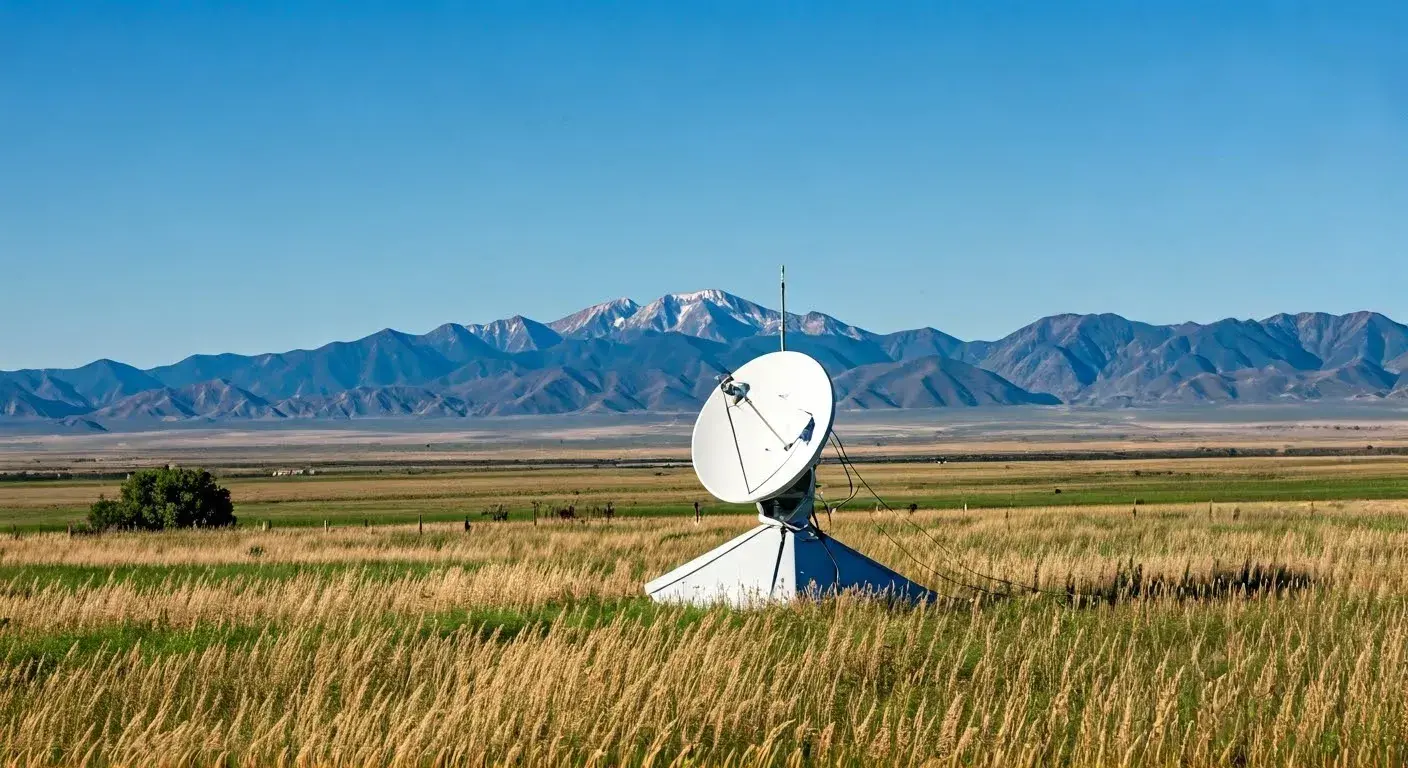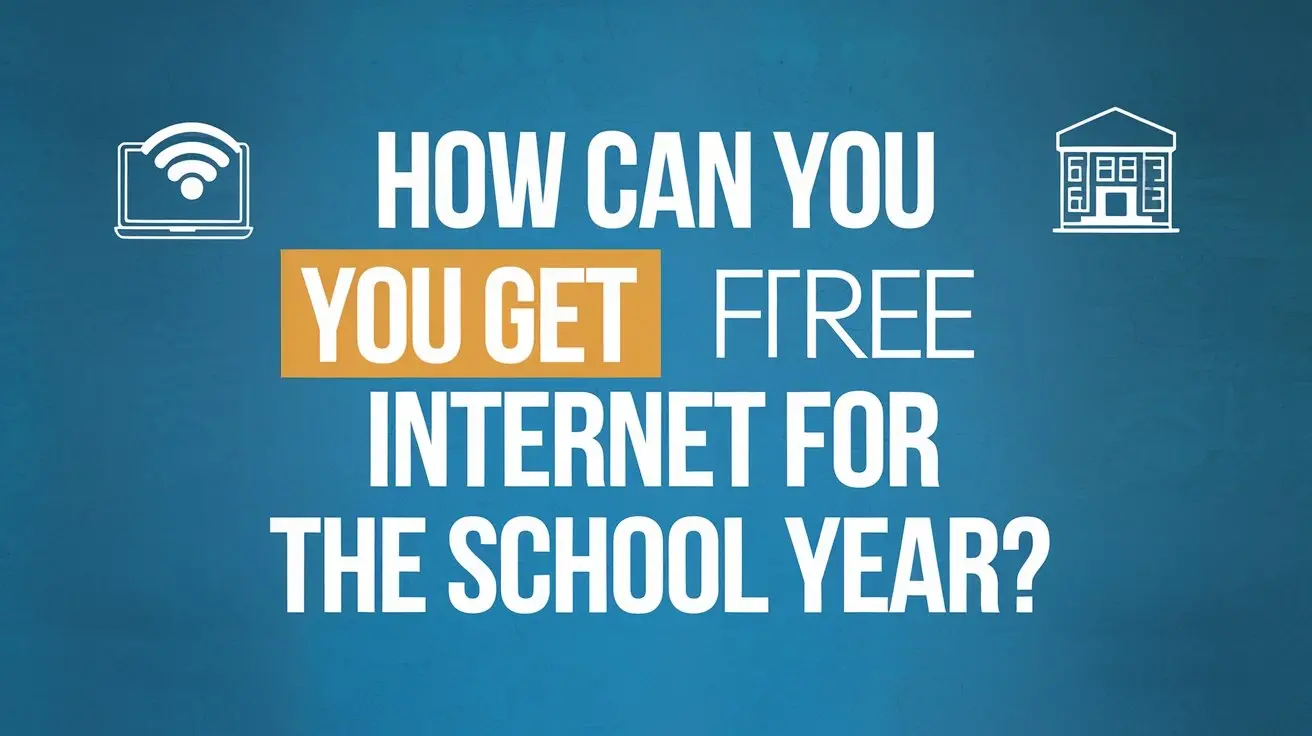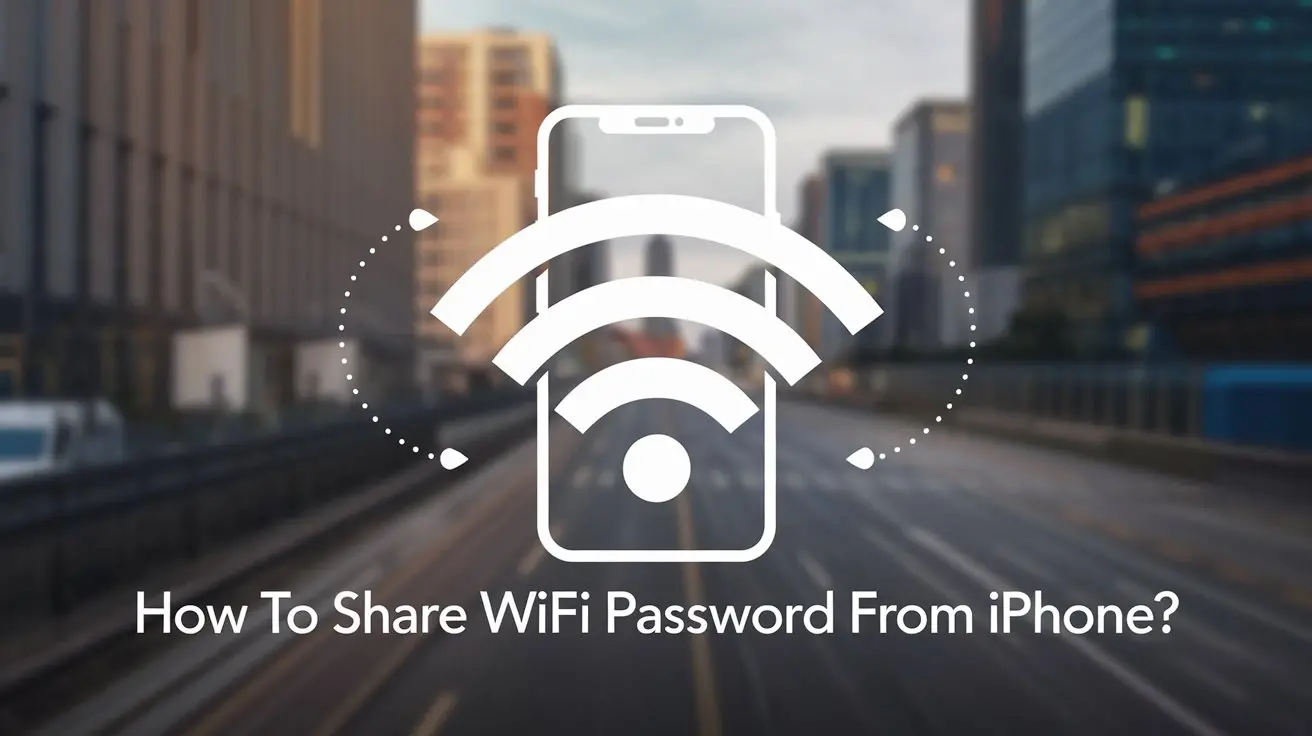-
Posted on: 17 Mar 2025

-
Introduction
In 2025, the internet is a cornerstone of modern life, powering everything from remote work and online education to streaming entertainment and global communication. Yet, for nearly 3 billion people—over a third of the world’s population—reliable internet access remains out of reach, particularly in rural and remote areas where traditional infrastructure like fiber or cable is impractical. This is where satellite broadband internet emerges as a transformative solution, offering connectivity virtually anywhere with a clear view of the sky.
Satellite broadband uses satellites orbiting Earth to deliver internet access, bypassing the need for physical cables or mobile networks. This technology is particularly vital for bridging the digital divide, enabling access to education, healthcare, and economic opportunities in underserved regions. Companies like SpaceX’s Starlink, Amazon’s Project Kuiper, and established providers like Viasat and Hughesnet are driving innovation, deploying low-Earth orbit (LEO) satellites to provide high-speed, low-latency internet. As competition intensifies and technology advances, satellite broadband is poised to reshape global connectivity.
This comprehensive guide explores the current state of satellite broadband, its advantages and disadvantages, its role in addressing global connectivity challenges, and its future potential. We’ll also compare it to other technologies, highlight real-world applications, and answer common questions in an FAQ section to help you decide if satellite broadband is right for you.
What Is Satellite Broadband Internet?
Satellite broadband internet is a wireless internet service that uses satellites to connect users to the global internet. Unlike traditional broadband, which relies on physical infrastructure like fiber-optic cables or mobile towers, satellite internet involves a user terminal (a small dish) that communicates with a satellite in orbit. The satellite relays signals to a ground station connected to the internet backbone, enabling connectivity in even the most remote locations.
How It Works
-
User Terminal: A dish installed at your home or business sends and receives signals to a satellite.
-
Satellite: Orbiting satellites (either geostationary or LEO) act as relays, transmitting data between the user and ground stations.
-
Ground Station: These stations connect to the internet backbone, completing the data transfer.
There are two main types of satellite internet:
-
Geostationary Satellites: Positioned 35,000 km above Earth, these offer wide coverage but higher latency (up to 600 ms) due to the distance signals travel.
-
Low-Earth Orbit (LEO) Satellites: Orbiting 500–2,000 km above Earth, LEO satellites, used by providers like Starlink, reduce latency to 20–40 ms and offer faster speeds.
Current State of Satellite Broadband in 2025
The satellite broadband industry is thriving in 2025, driven by technological advancements and increasing demand for global connectivity. Several providers are leading the charge, each with distinct offerings.
Major Providers
Provider
Speed Range (Download/Upload)
Starting Monthly Cost
Contract
Equipment Cost
Data Cap
Key Features
Starlink
25–220 Mbps / 5–25 Mbps
$120 (Standard), $65–$540 (Priority), $50–$2,150 (Mobile)
None
$349 (Standard), $599–$1,499 (Priority)
Unlimited, 50GB–2TB
Starlink Mini, low latency (20 ms), global coverage
Hughesnet
50–100 Mbps / 5 Mbps
$50–$95
2 years
$15–$20/mo or $300–$450 one-time
Unlimited, 100–200GB soft cap
Jupiter 3 satellite upgrade
Viasat
25–150 Mbps / 3 Mbps
$100–$150
None
$15/mo or $250 one-time
Unlimited, 850GB soft cap
No contract since March 2024
Project Kuiper
Up to 1 Gbps (projected)
TBD (late 2025 launch)
TBD
TBD
TBD
Three service tiers, global ambitions
OneWeb
Up to 300 Mbps (projected)
TBD
TBD
TBD
TBD
Partnership with Bharti Airtel
-
Starlink (SpaceX): With over 5,400 satellites in orbit, Starlink leads the market, offering speeds up to 220 Mbps and a median of 64.54 Mbps (Ookla Q1 2024). Its Starlink Mini kit provides portable connectivity with speeds up to 100 Mbps. Starlink has removed waitlists, indicating widespread availability (Starlink).
-
Hughesnet: Enhanced by the Jupiter 3 satellite launched in 2023, Hughesnet offers reliable service with speeds up to 100 Mbps, though with soft data caps (Allconnect).
-
Viasat: Known for nationwide coverage, Viasat provides speeds up to 150 Mbps and has eliminated contracts since March 2024, making it more flexible (CNET).
-
Amazon’s Project Kuiper: Set to launch commercial service in late 2025, Project Kuiper aims to deploy 3,236 LEO satellites, offering speeds up to 1 Gbps. It targets consumers, businesses, and governments (Amazon).
-
OneWeb: Partnered with Bharti Airtel, OneWeb is expanding in India and other regions, with speeds up to 300 Mbps projected (India TV).
Market Trends
-
Speed Improvements: Starlink’s median download speed increased from 53.9 Mbps in 2022 to 104.7 Mbps in 2025, with upload speeds at 14.8 Mbps (Ookla).
-
Global Expansion: India is preparing to launch satellite internet by June 2025, with providers like Jio, Airtel, and Starlink competing for spectrum (LiveMint).
-
Competition: The entry of Project Kuiper and others is driving innovation and potentially lowering costs.
-
Market Growth: The global satellite services market is projected to grow from $78.1 billion in 2022 to $203.6 billion by 2033, at a CAGR of 9.1% (SatellitePro ME).
Advantages of Satellite Broadband
Satellite broadband offers unique benefits that make it a compelling choice for many users:
-
Global Coverage: It can reach areas where cable, fiber, or mobile networks are unavailable, such as rural farms, islands, or ships at sea.
-
Rapid Deployment: Satellites can be launched and operational faster than building terrestrial infrastructure, providing quick access to connectivity.
-
Mobility: Ideal for mobile applications like maritime, aviation, or remote field operations, with solutions like Starlink Mini enabling portable internet.
-
Resilience: Satellite infrastructure is less vulnerable to physical damage from natural disasters or vandalism, making it reliable for emergency situations.
Disadvantages of Satellite Broadband
Despite its advantages, satellite broadband has limitations:
-
Latency: Geostationary satellites have high latency (up to 600 ms), though LEO satellites reduce this to 20–40 ms. This can still affect real-time applications like gaming or video calls.
-
Weather Interference: Heavy rain, snow, or fog can disrupt signals, leading to temporary service interruptions.
-
Cost: Monthly fees ($50–$200) and equipment costs ($250–$1,499) are often higher than terrestrial broadband, though competition is driving prices down.
-
Data Caps: Some providers impose soft data caps (e.g., Hughesnet’s 100–200 GB), which may limit heavy users.
Satellite Broadband vs. Other Technologies
To understand satellite broadband’s role, it’s helpful to compare it to other internet technologies:
Technology
Speed Range
Latency
Availability
Best For
Satellite
25–220 Mbps (LEO), up to 1 Gbps (projected)
20–600 ms
Nearly global
Rural, remote, mobile users
Fiber
Up to 10 Gbps
<10 ms
Urban/suburban
High-speed, low-latency needs
5G Wireless
Up to 1 Gbps
10–20 ms
Urban/rural (expanding)
Mobile, urban users
Cable
Up to 1 Gbps
20–50 ms
Urban/suburban
General household use
DSL
Up to 100 Mbps
30–60 ms
Widespread, declining
Budget-conscious users
-
Fiber: Offers the highest speeds and lowest latency but is limited to areas with infrastructure.
-
5G: Provides high speeds and low latency but is less available in rural areas.
-
Cable/DSL: Widely available in urban areas but slower and less reliable than fiber.
When to Choose Satellite Broadband:
-
Rural/Remote Areas: Where other options are unavailable.
-
Mobility: For users on ships, planes, or RVs.
-
Emergency Backup: When terrestrial networks fail during disasters.
Real-World Applications
Rural Connectivity in India
With nearly 40% of India’s 1.4 billion population lacking internet access, satellite broadband is set to transform rural connectivity. Providers like Jio, Airtel, and Starlink are competing for spectrum, with services expected to launch by June 2025. This could enable online education, telemedicine, and e-commerce in remote villages (LiveMint).
Maritime and Aviation
Satellite internet is critical for ships and airplanes, providing connectivity for navigation, communication, and passenger services. Starlink’s maritime and aviation plans offer high-speed internet in international waters and airspace (Starlink).
Emergency Services
During natural disasters, when terrestrial networks are disrupted, satellite internet can restore communication. Starlink has been used in disaster-stricken areas to support relief efforts, demonstrating its resilience (Viasat).
The Future of Satellite Broadband
The satellite broadband industry is on the cusp of a revolution, with several trends shaping its future:
Increased Competition
-
New Entrants: Amazon’s Project Kuiper, set to launch in late 2025, aims to capture 30% of the market, potentially generating $7.1 billion by 2032 (PYMNTS).
-
Price Reductions: Competition among Starlink, Kuiper, and others is likely to lower costs, making satellite internet more accessible.
Technological Innovations
-
Laser Links: Inter-satellite laser communication reduces latency and increases bandwidth by enabling direct satellite-to-satellite data transfer.
-
Advanced Antennas: Phased-array antennas improve signal strength and reduce user terminal size, enhancing portability.
-
AI Integration: Artificial intelligence can optimize network performance, predict outages, and improve user experience.
-
Direct-to-Cell Services: Starlink’s Direct-to-Cell technology allows smartphones to connect directly to satellites, expanding cellular coverage (Compare Internet).
Global Impact
-
Digital Divide: Satellite broadband can connect the 3 billion people currently offline, supporting UN Sustainable Development Goals in education, health, and economic growth.
-
Economic Growth: By enabling e-commerce and remote work in underserved areas, satellite internet can drive economic development.
-
Disaster Recovery: Its resilience makes it vital for emergency communications when traditional networks fail.
Challenges
-
Space Debris: Thousands of satellites increase the risk of collisions, necessitating better debris management.
-
Spectrum Allocation: Regulatory hurdles, such as spectrum allocation in India, must be addressed to avoid interference (India TV).
-
Affordability: Ensuring low-cost access for developing regions remains a challenge.
Conclusion
Satellite broadband internet is a transformative force in global connectivity, offering a lifeline to the 3 billion people without internet access. With providers like Starlink, Hughesnet, Viasat, and upcoming players like Project Kuiper, the industry is advancing rapidly, delivering faster speeds and lower latency through LEO satellites. While challenges like weather interference, cost, and space debris persist, the potential to connect remote regions, support disaster recovery, and enable mobile connectivity is immense. As competition drives innovation and affordability, satellite broadband is likely to play a central role in achieving universal connectivity, empowering communities and fostering global progress in 2025 and beyond.
FAQ
-
What is satellite broadband internet?
Satellite broadband uses satellites to provide internet access, ideal for areas without cable or fiber infrastructure. -
How does satellite internet work?
A dish at your location communicates with a satellite, which relays signals to a ground station connected to the internet. -
Is satellite internet fast?
LEO services like Starlink offer 25–220 Mbps, while geostationary services provide 25–150 Mbps, suitable for most online activities. -
Can I use satellite internet in urban areas?
Yes, but fiber or 5G may be more cost-effective in cities with existing infrastructure. -
What are the main providers of satellite internet?
Starlink, Hughesnet, Viasat, OneWeb, and Amazon’s Project Kuiper (launching late 2025). -
How much does satellite internet cost?
Monthly costs range from $50–$200, with equipment costs of $250–$1,499, depending on the provider. -
Is satellite internet affected by weather?
Yes, heavy rain, snow, or fog can temporarily disrupt service. -
Can I stream Netflix or play online games with satellite internet?
LEO services with low latency (20–40 ms) support streaming and gaming, though performance may vary. -
Is satellite internet secure?
Providers typically encrypt data, but security also depends on user practices like strong passwords. -
What is the future of satellite internet?
With advancements in LEO satellites, laser links, and direct-to-cell services, satellite broadband will likely become faster, more affordable, and critical for global connectivity. -
How does satellite internet compare to fiber?
Fiber offers higher speeds (up to 10 Gbps) and lower latency but is limited to urban areas. Satellite provides global coverage but with higher latency. -
Can satellite internet be used for business?
Yes, especially in rural areas, though high-bandwidth businesses may prefer fiber. -
Is installation complicated?
Installation involves setting up a dish with a clear sky view; many providers offer professional installation. -
What happens during a power outage?
Satellite internet requires power for the dish. Backup power solutions can maintain connectivity. -
Can I cancel satellite internet anytime?
Some providers (e.g., Starlink, Viasat) offer no-contract plans, while others (e.g., Hughesnet) require a 2-year commitment.
-





